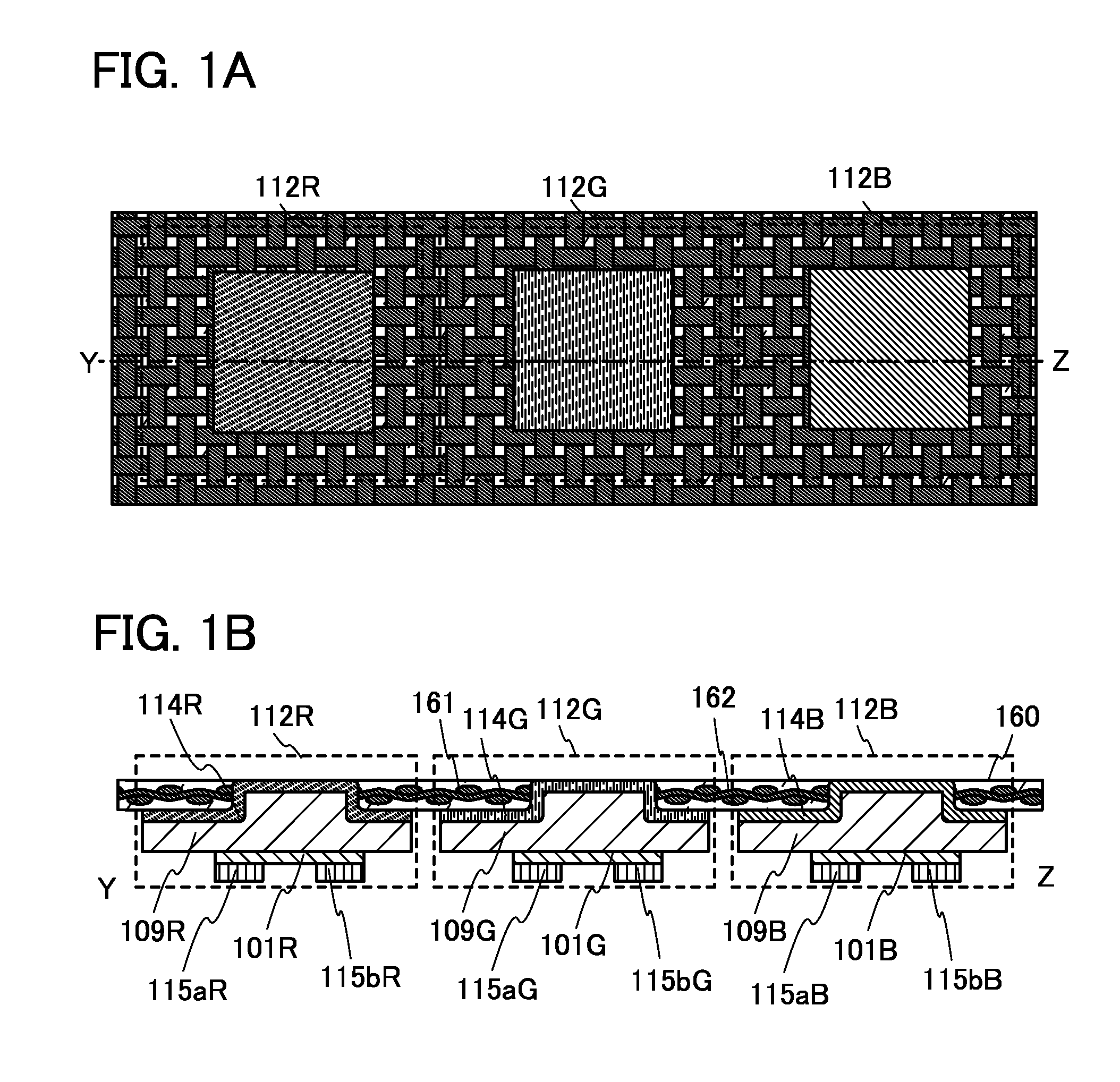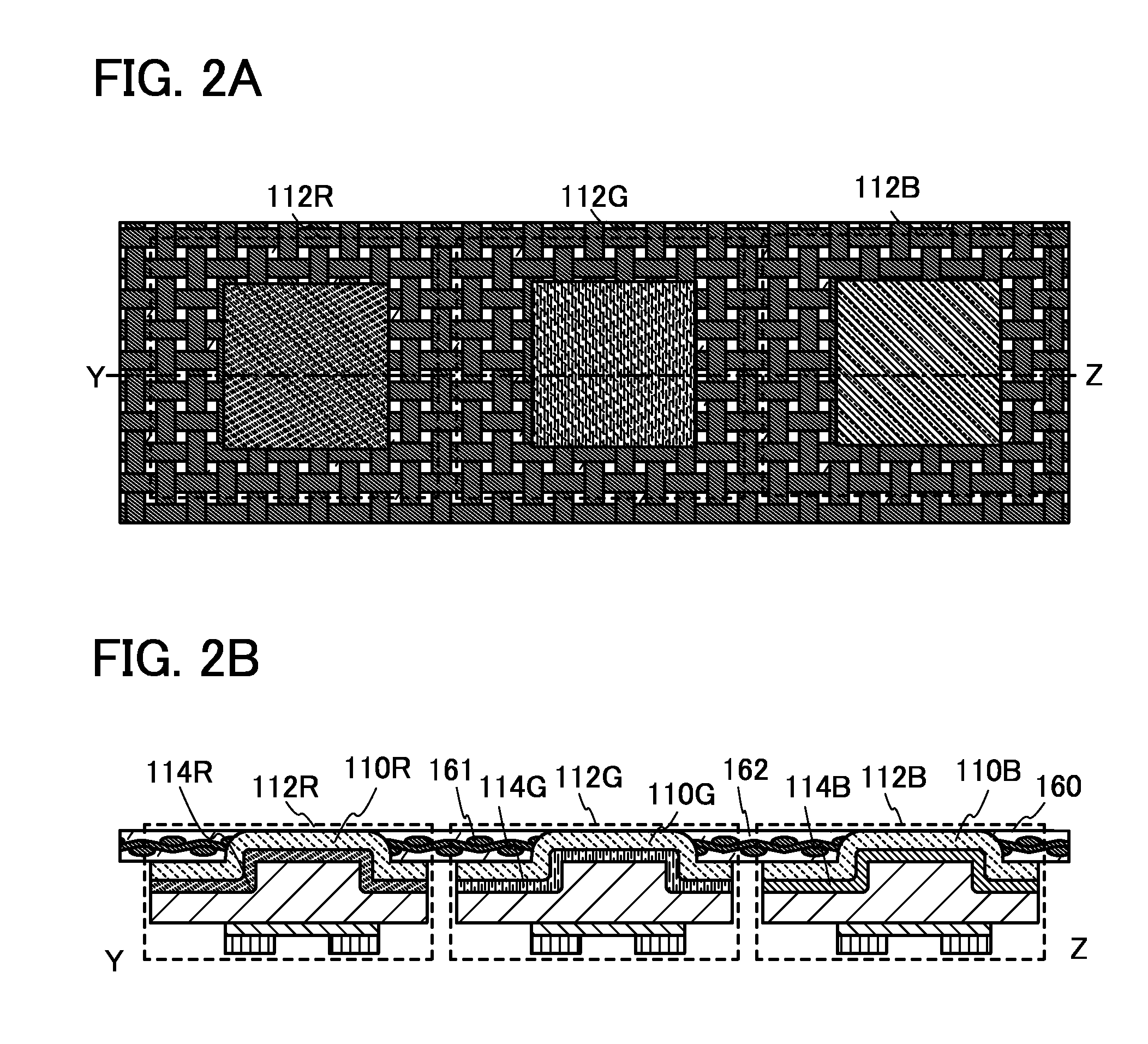Semiconductor device and method for manufacturing semiconductor device
a semiconductor and semiconductor technology, applied in the direction of semiconductor/solid-state device manufacturing, semiconductor devices, semiconductor devices, etc., can solve the problems of easy damage to the semiconductor device, high cost of the dicer (a dicing blade) or the like used as a scribing device, and easy identification. , the effect of reducing misidentification even in automatic operation
- Summary
- Abstract
- Description
- Claims
- Application Information
AI Technical Summary
Benefits of technology
Problems solved by technology
Method used
Image
Examples
embodiment 1
[0060]In this embodiment, a semiconductor device for realizing reduction in thickness and size and a method for manufacturing the semiconductor device with high yield are described in detail with reference to FIGS. 1A and 1B, FIGS. 2A and 2B, FIGS. 3A to 3F, FIGS. 4A and 4B, FIGS. 5A to 5D, FIGS. 6A to 6C, FIGS. 7A and 7B, and FIGS. 8A and 8B.
[0061]FIGS. 1A and 1B illustrate a semiconductor device of this embodiment. FIG. 1A is a plan view of the semiconductor device, and FIG. 1B is a cross-sectional view along Y-Z in FIG. 1A.
[0062]The semiconductor device in FIGS. 1A and 1B has a structure in which a semiconductor integrated circuit 112R, a semiconductor integrated circuit 112G, and a semiconductor integrated circuit 112B are bonded to a structure body 160 in which a fibrous body 161 is impregnated with an organic resin 162. The semiconductor integrated circuit 112R, the semiconductor integrated circuit 112G, and the semiconductor integrated circuit 112B are provided with terminal ...
embodiment 2
[0207]For a semiconductor device according to an embodiment of the present invention, any of a variety of forms of field effect transistors can be used as a semiconductor element included in a semiconductor integrated circuit portion. In this embodiment, a field effect transistor including a single crystal semiconductor layer is described in detail as a semiconductor element.
[0208]A method in which a single crystal semiconductor layer made from a single crystal semiconductor substrate is provided over a light-transmitting substrate and a semiconductor element included in a semiconductor integrated circuit portion is formed is described below with reference to FIGS. 15A to 15D and FIGS. 16A to 16C.
[0209]A single crystal semiconductor substrate 1108 illustrated in FIG. 15A is cleaned, and is irradiated with ions accelerated by an electric field to a predetermined depth from the surface to form an embrittlement layer 1110. Ion irradiation is performed in consideration of the thickness ...
embodiment 3
[0273]This embodiment describes an example of steps of bonding a single crystal semiconductor layer from a single crystal semiconductor substrate to a light-transmitting substrate, which are different from those in Embodiment 2. Accordingly, description of the same portion or a portion having a similar function to the portion in Embodiment 2 is omitted.
[0274]First, processing on the single crystal substrate side is described. In this embodiment, a single crystal semiconductor substrate is degreased and cleaned to remove an oxide film on the surface, and thermal oxidation is performed. As thermal oxidation, oxidation in an oxidizing atmosphere to which halogen is added is preferably performed. For example, heat treatment is performed at a temperature of 700° C. or higher in an atmosphere containing HCl at 0.5 to 10 volume % (preferably 3 volume %) with respect to oxygen. Thermal oxidation is preferably performed at a temperature of 950 to 1100° C. The processing time may be 0.1 to 6 ...
PUM
 Login to View More
Login to View More Abstract
Description
Claims
Application Information
 Login to View More
Login to View More - R&D
- Intellectual Property
- Life Sciences
- Materials
- Tech Scout
- Unparalleled Data Quality
- Higher Quality Content
- 60% Fewer Hallucinations
Browse by: Latest US Patents, China's latest patents, Technical Efficacy Thesaurus, Application Domain, Technology Topic, Popular Technical Reports.
© 2025 PatSnap. All rights reserved.Legal|Privacy policy|Modern Slavery Act Transparency Statement|Sitemap|About US| Contact US: help@patsnap.com



